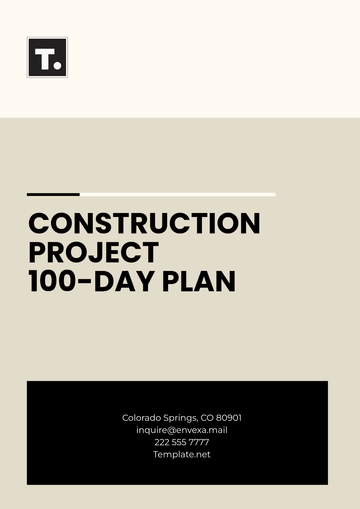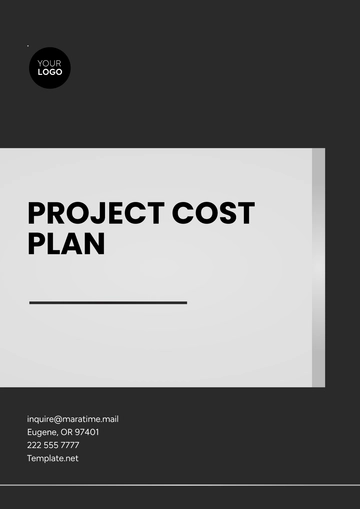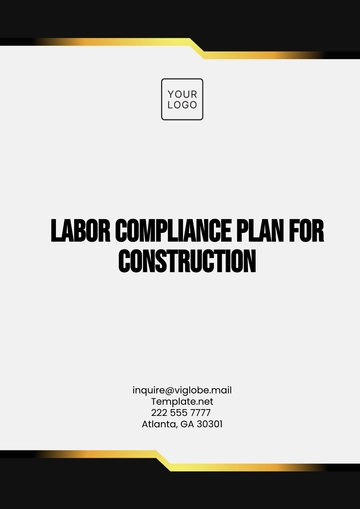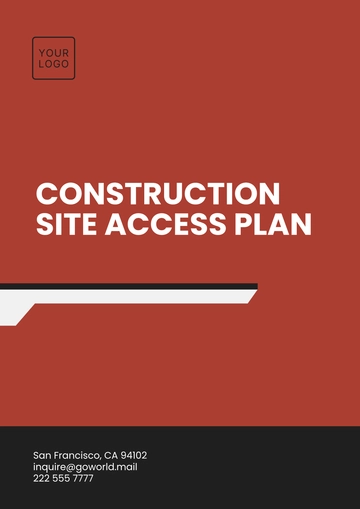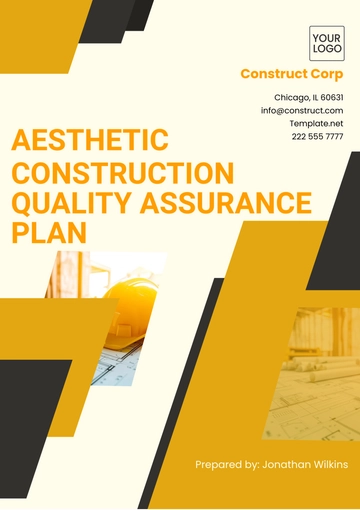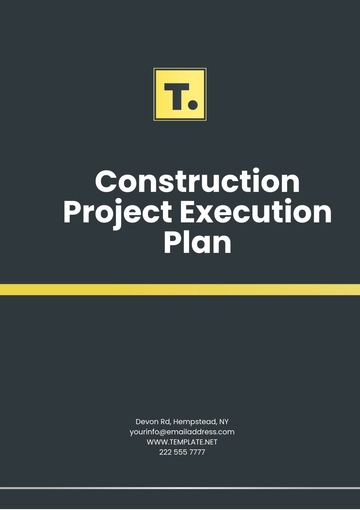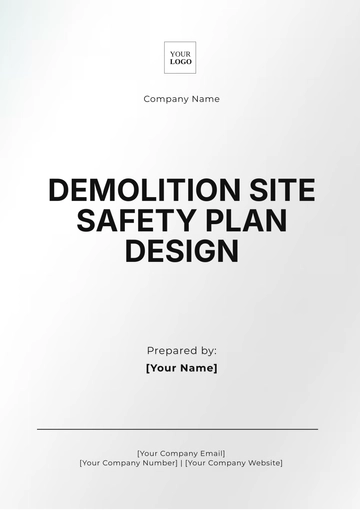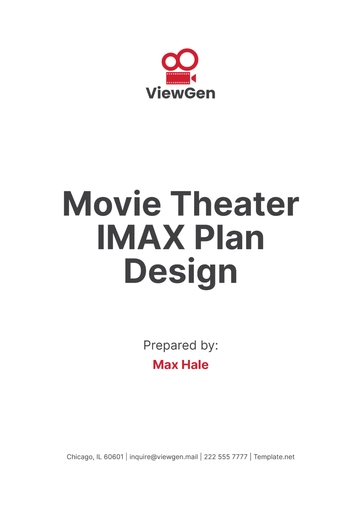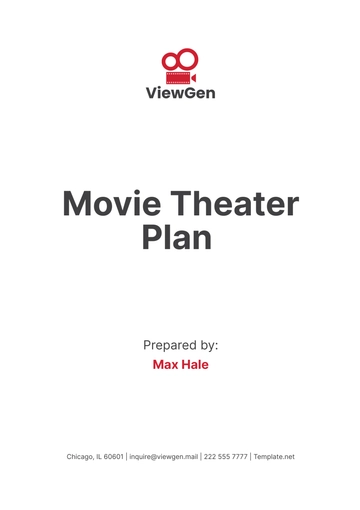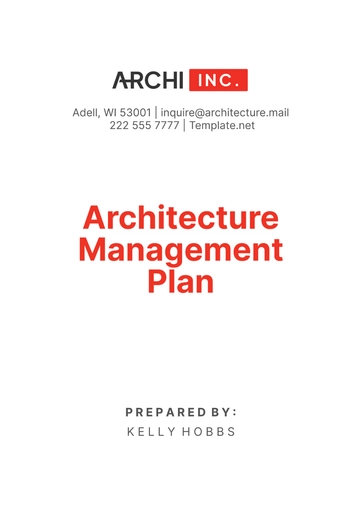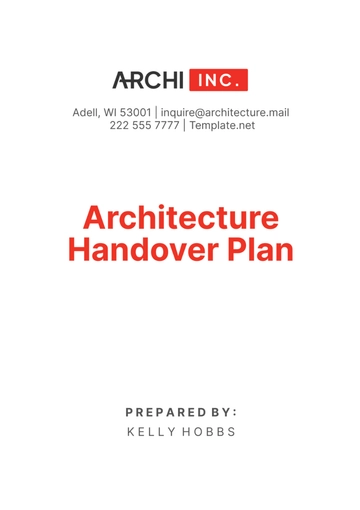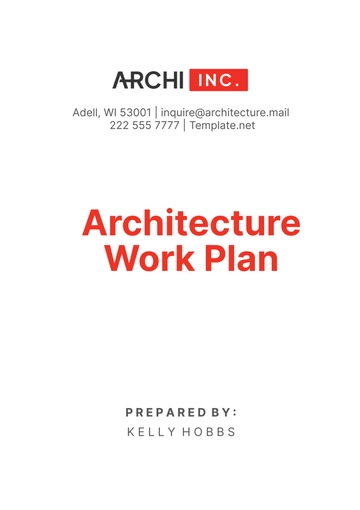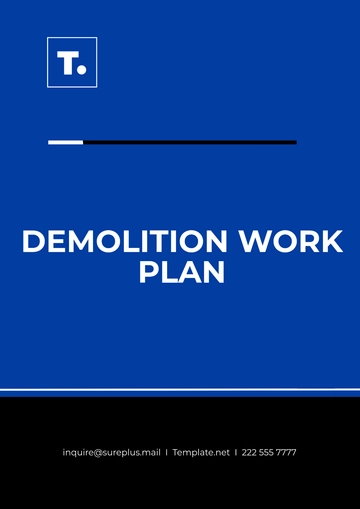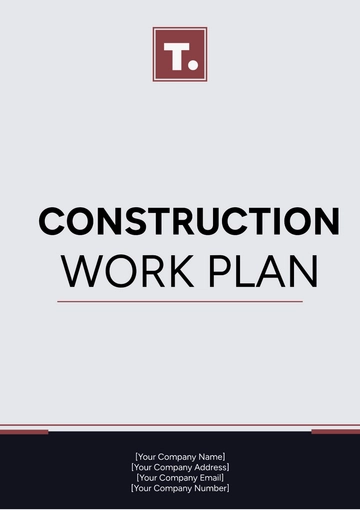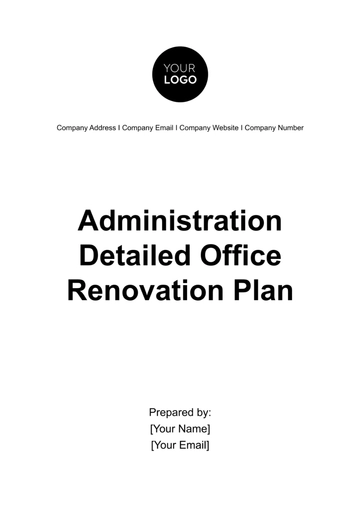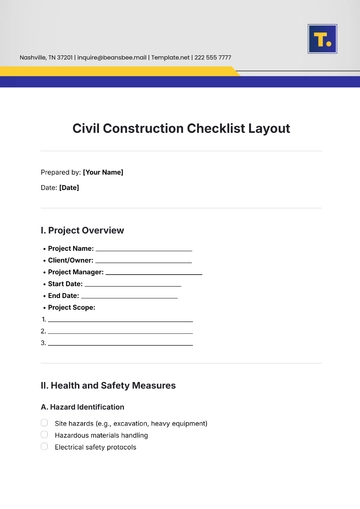Free Construction Phase Plan
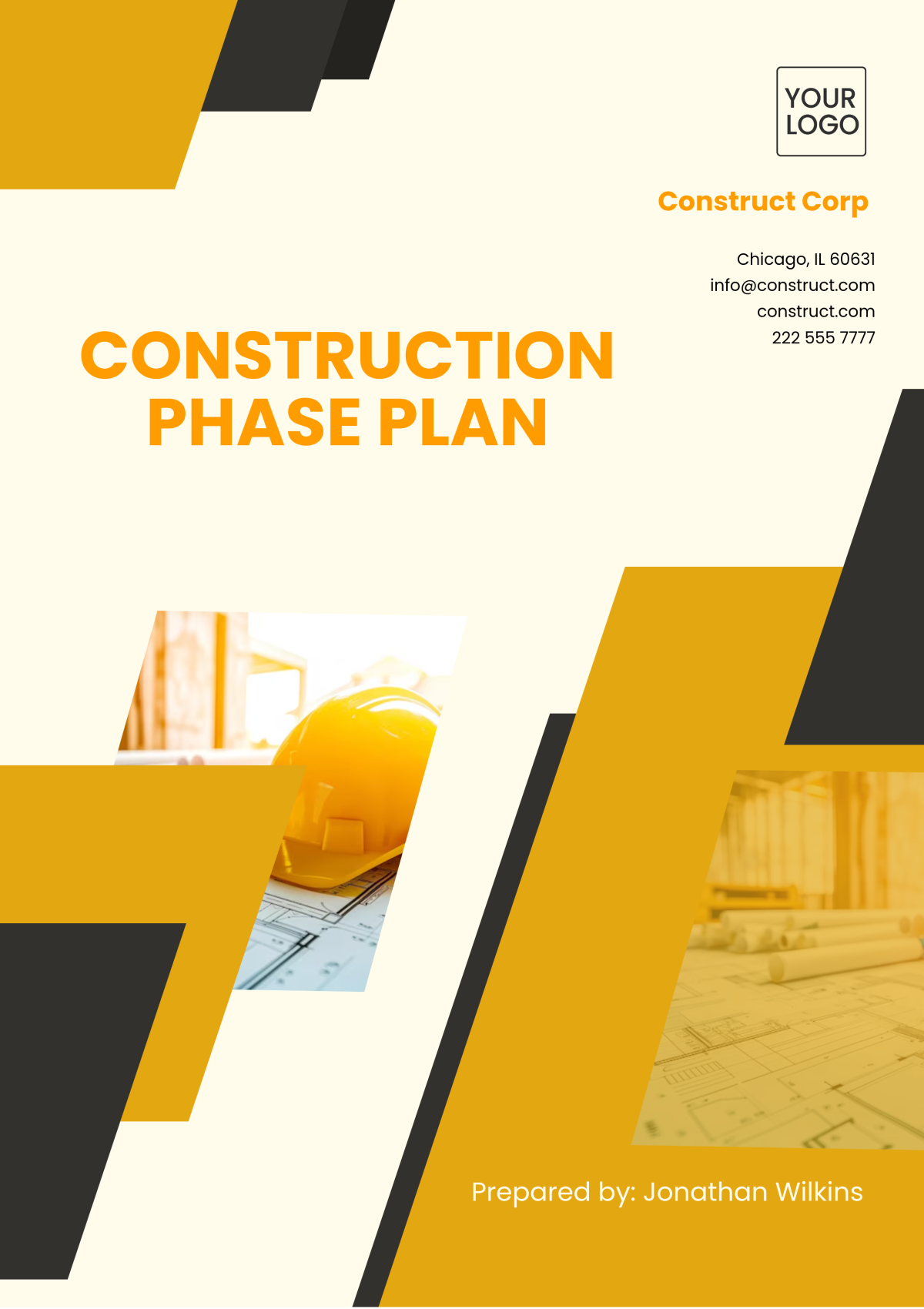
I. Introduction
The Construction Phase Plan for [Your Company Name] delineates the comprehensive strategy and procedures to be adhered to during the construction phase of our project. This plan is designed to provide a structured approach to managing construction activities, ensuring that each phase progresses smoothly while maintaining adherence to project goals and timelines. By setting clear expectations and protocols, we aim to facilitate effective coordination among all stakeholders involved, from contractors to project managers, thereby optimizing workflow and minimizing potential disruptions.
Our commitment to safety, efficiency, and regulatory compliance is at the forefront of this plan. We have incorporated industry best practices and legal requirements to ensure that all construction activities meet or exceed the standards set forth by relevant regulations, including OSHA guidelines and local building codes. This plan will be continuously monitored and updated as necessary to address any changes in project scope or emerging safety concerns. By rigorously following this Construction Phase Plan, [Your Company Name] aims to deliver a high-quality project while upholding the highest standards of safety and efficiency.
II. Project Overview
The project undertaken by [Your Company Name] involves the construction of a five-story commercial office building located at 1234 Innovation Drive, Silicon Valley, CA. This development is aimed at creating a state-of-the-art workspace designed to meet the needs of technology startups and established firms alike. The project encompasses a total area of 100,000 square feet and is expected to be completed within 14 months from the start date.
The construction process will be divided into several key phases: site preparation, foundation work, structural framing, exterior and interior finishes, and final inspections. Site preparation will involve clearing and grading the land, followed by the excavation and installation of the foundation. Structural framing will include the erection of steel and concrete elements that form the building’s core. The subsequent phases will focus on the installation of exterior facades, interior partitions, and finishes, with final inspections ensuring that all work meets the required standards.
Compliance with applicable federal, state, and local regulations is paramount to the success of this project. [Your Company Name] will adhere to all relevant safety standards, including OSHA guidelines, and building codes set forth by the California Building Standards Commission. Environmental regulations will be followed to minimize impact, including waste management protocols and dust control measures. Regular inspections and audits will be conducted to monitor progress, address any issues promptly, and ensure that all activities are carried out in accordance with the project’s safety and quality objectives. This rigorous approach aims to deliver a high-quality commercial space while maintaining minimal disruption to the surrounding community.
III. Health and Safety Plan
Ensuring the safety and health of all workers on site is our top priority at [Your Company Name]. Our Health and Safety Plan encompasses the following key sub-sections:
1. Risk Assessments
To proactively manage potential hazards, we conduct thorough risk assessments for all major activities. This includes:
Site-Specific Risk Assessment: Identifies hazards unique to the project site.
Activity-Based Risk Assessment: Evaluates risks related to specific tasks, such as excavation and electrical work.
Mitigation Measures: Details controls and safety measures to address identified risks.
2. Emergency Procedures
Effective response to emergencies is crucial. Our emergency procedures include:
a. Emergency Contacts:
Local emergency services (fire, medical, police)
On-site first aid personnel
Project manager and safety officer
b. Emergency Response Plans:
Fire evacuation
Medical emergencies and first aid
Hazardous material spills
c. Emergency Drills: Regularly scheduled drills to practice response procedures.
3. Personal Protective Equipment (PPE) Requirements
Proper use of PPE is essential for safety. Our PPE requirements are:
a. General PPE:
Hard hats
Safety goggles
Gloves
Steel-toed boots
b. Task-Specific PPE:
Hearing protection for noisy areas
Respirators for hazardous materials
High-visibility vests for high-traffic zones
c. PPE Maintenance: Regular inspections and replacement of damaged or worn equipment.
4. Safety Training and Meetings
Ongoing training and communication are vital for maintaining safety standards. This includes:
Initial Safety Orientation: Introduction to safety procedures, emergency plans, and PPE use.
Ongoing Training: Regular workshops, refresher courses, and updates on safety regulations.
Safety Meetings: Regular briefings to discuss recent incidents, near misses, and safety improvements.
5. Safety Audits and Inspections
Regular audits and inspections help ensure compliance and address safety concerns:
a. Routine Inspections: Daily site checks and weekly comprehensive audits.
b. Inspection Checklists:
Compliance with protocols
Condition of equipment and work areas
c. Audit Reports: Documentation of findings and action plans for corrective measures.
This comprehensive Health and Safety Plan is designed to create a safe and productive work environment at all stages of the construction project.
IV. Construction Schedule
The Construction Schedule provides a detailed timeline for the project, outlining key milestones and deadlines to ensure that all phases of construction are completed efficiently and on time. This schedule is a crucial tool for coordinating activities, managing resources, and tracking progress throughout the project lifecycle. By adhering to the established timelines, we aim to meet project deadlines, stay within budget, and deliver a high-quality result.
The following table outlines the key milestones and deadlines for the construction project:
Activity | Start Date | End Date |
|---|---|---|
Site Preparation | [Month Day, Year] | [Month Day, Year] |
Foundation Work | [Month Day, Year] | [Month Day, Year] |
Structure Construction | [Month Day, Year] | [Month Day, Year] |
Finishing Work | [Month Day, Year] | [Month Day, Year] |
Final Inspections | [Month Day, Year] | [Month Day, Year] |
V. Quality Management Plan
The Quality Management Plan is integral to ensuring that the construction project meets the highest standards of quality and adheres to all specified requirements. This plan encompasses a range of key components designed to monitor, assess, and enhance the quality of the work throughout the project lifecycle.
1. Quality Control (QC) and Quality Assurance (QA) Procedures
Our Quality Control (QC) procedures focus on identifying defects and ensuring that construction activities comply with project specifications and industry standards. QC involves systematic inspections, testing, and reviews at various stages of the project. Quality Assurance (QA) procedures, on the other hand, are aimed at preventing defects by implementing robust processes and standards from the outset. QA includes the development of detailed project guidelines, regular training for personnel, and adherence to best practices in construction methods and materials.
2. Materials Testing and Verification
To ensure that all materials used in the construction meet the required standards, rigorous testing and verification procedures are implemented. This includes:
Pre-Use Testing: Materials are tested before use to confirm their compliance with project specifications and industry standards.
Ongoing Verification: Continuous monitoring and random sampling of materials during construction to ensure consistent quality.
Certification: Only materials from certified suppliers with documented quality assurance processes are used.
3. Regular Site Inspections
Regular site inspections are conducted to monitor work quality and compliance with design specifications. These inspections include:
Daily Inspections: Routine checks to ensure daily tasks are performed correctly and safely.
Weekly Reviews: Comprehensive inspections to assess overall progress and quality.
Phase Inspections: Detailed evaluations at key milestones to verify that completed work meets quality standards.
4. Documentation of Findings and Corrective Actions
All findings from inspections and tests are documented meticulously. This documentation includes:
Inspection Reports: Detailed records of inspection results, including any identified issues.
Corrective Action Plans: Plans to address and rectify any defects or non-compliance issues.
Follow-Up Actions: Verification that corrective measures have been implemented effectively.
By adhering to this Quality Management Plan, [Your Company Name] ensures that the construction project maintains the highest level of quality and meets all required standards, leading to successful project completion and client satisfaction.
VI. Environmental Management Plan
The Environmental Management Plan is a vital component of our commitment to sustainable construction and environmental stewardship. This plan outlines our approach to ensuring compliance with all relevant environmental regulations while actively promoting practices that minimize our ecological footprint. By implementing this plan, we aim to mitigate the environmental impact of our construction activities and contribute to the conservation of natural resources. The following key actions are central to our strategy: waste management and recycling procedures, soil and water protection measures, noise and air quality management, and the conservation of energy and resources. These actions are designed to promote environmental responsibility and sustainability throughout the project.
Key actions involve:
Waste management and recycling procedures
Soil and water protection measures
Noise and air quality management
Conservation of energy and resources
VII. Communications Plan
Effective communication among all stakeholders is essential for the successful execution and completion of the construction project. The Communications Plan is designed to facilitate clear, timely, and accurate exchange of information to ensure that all parties are informed and aligned throughout the project lifecycle.
1. Regular Progress Meetings and Updates
Scheduled progress meetings will be held to review project status, address any issues, and plan upcoming tasks. These meetings will involve key stakeholders, including project managers, contractors, and clients. Regular updates will be provided through reports and presentations to keep everyone informed about the project's progress, milestones, and any changes to the schedule or scope.
2. Reporting Procedures and Responsibilities
Clear reporting procedures will be established to ensure that all relevant information is communicated effectively. This includes:
Daily Reports: Summary of daily activities, including completed tasks and any issues encountered.
Weekly Reports: Comprehensive overview of progress, upcoming work, and any potential risks.
Incident Reports: Immediate documentation and communication of any incidents or safety concerns.
3. Stakeholder Engagement Strategies
Engaging stakeholders effectively is crucial for project success. Strategies include:
Regular Briefings: Updates to keep stakeholders informed and involved in decision-making.
Feedback Mechanisms: Channels for stakeholders to provide input and raise concerns.
4. Communication Channels and Tools
We will utilize a variety of communication channels and tools to ensure efficient information flow, including:
Email and Project Management Software: For sharing documents, updates, and scheduling.
Teleconferences and Video Calls: For remote meetings and discussions.
On-Site Notice Boards: For important announcements and daily updates.
VIII. Conclusion
This Construction Phase Plan serves as a comprehensive guide to managing the construction process, ensuring that all aspects of the project are meticulously planned and executed. By providing a structured approach, the plan addresses critical areas such as safety, quality, environmental management, and communication, facilitating a well-coordinated and efficient construction effort.
Our commitment to these key areas is intended to achieve project objectives effectively while maintaining high standards of performance and compliance. This plan will be continuously monitored and updated as necessary to adapt to any changes or challenges, ensuring that the project remains on track and delivers successful outcomes.
- 100% Customizable, free editor
- Access 1 Million+ Templates, photo’s & graphics
- Download or share as a template
- Click and replace photos, graphics, text, backgrounds
- Resize, crop, AI write & more
- Access advanced editor
Create a clear and organized outline for your projects with the Construction Phase Plan Template. This fully editable and customizable template allows you to structure each phase of construction effortlessly. Editable in our AI Editor Tool, it ensures flexibility and precision. Download now from Template.net to simplify your project planning.
You may also like
- Finance Plan
- Construction Plan
- Sales Plan
- Development Plan
- Career Plan
- Budget Plan
- HR Plan
- Education Plan
- Transition Plan
- Work Plan
- Training Plan
- Communication Plan
- Operation Plan
- Health And Safety Plan
- Strategy Plan
- Professional Development Plan
- Advertising Plan
- Risk Management Plan
- Restaurant Plan
- School Plan
- Nursing Home Patient Care Plan
- Nursing Care Plan
- Plan Event
- Startup Plan
- Social Media Plan
- Staffing Plan
- Annual Plan
- Content Plan
- Payment Plan
- Implementation Plan
- Hotel Plan
- Workout Plan
- Accounting Plan
- Campaign Plan
- Essay Plan
- 30 60 90 Day Plan
- Research Plan
- Recruitment Plan
- 90 Day Plan
- Quarterly Plan
- Emergency Plan
- 5 Year Plan
- Gym Plan
- Personal Plan
- IT and Software Plan
- Treatment Plan
- Real Estate Plan
- Law Firm Plan
- Healthcare Plan
- Improvement Plan
- Media Plan
- 5 Year Business Plan
- Learning Plan
- Marketing Campaign Plan
- Travel Agency Plan
- Cleaning Services Plan
- Interior Design Plan
- Performance Plan
- PR Plan
- Birth Plan
- Life Plan
- SEO Plan
- Disaster Recovery Plan
- Continuity Plan
- Launch Plan
- Legal Plan
- Behavior Plan
- Performance Improvement Plan
- Salon Plan
- Security Plan
- Security Management Plan
- Employee Development Plan
- Quality Plan
- Service Improvement Plan
- Growth Plan
- Incident Response Plan
- Basketball Plan
- Emergency Action Plan
- Product Launch Plan
- Spa Plan
- Employee Training Plan
- Data Analysis Plan
- Employee Action Plan
- Territory Plan
- Audit Plan
- Classroom Plan
- Activity Plan
- Parenting Plan
- Care Plan
- Project Execution Plan
- Exercise Plan
- Internship Plan
- Software Development Plan
- Continuous Improvement Plan
- Leave Plan
- 90 Day Sales Plan
- Advertising Agency Plan
- Employee Transition Plan
- Smart Action Plan
- Workplace Safety Plan
- Behavior Change Plan
- Contingency Plan
- Continuity of Operations Plan
- Health Plan
- Quality Control Plan
- Self Plan
- Sports Development Plan
- Change Management Plan
- Ecommerce Plan
- Personal Financial Plan
- Process Improvement Plan
- 30-60-90 Day Sales Plan
- Crisis Management Plan
- Engagement Plan
- Execution Plan
- Pandemic Plan
- Quality Assurance Plan
- Service Continuity Plan
- Agile Project Plan
- Fundraising Plan
- Job Transition Plan
- Asset Maintenance Plan
- Maintenance Plan
- Software Test Plan
- Staff Training and Development Plan
- 3 Year Plan
- Brand Activation Plan
- Release Plan
- Resource Plan
- Risk Mitigation Plan
- Teacher Plan
- 30 60 90 Day Plan for New Manager
- Food Safety Plan
- Food Truck Plan
- Hiring Plan
- Quality Management Plan
- Wellness Plan
- Behavior Intervention Plan
- Bonus Plan
- Investment Plan
- Maternity Leave Plan
- Pandemic Response Plan
- Succession Planning
- Coaching Plan
- Configuration Management Plan
- Remote Work Plan
- Self Care Plan
- Teaching Plan
- 100-Day Plan
- HACCP Plan
- Student Plan
- Sustainability Plan
- 30 60 90 Day Plan for Interview
- Access Plan
- Site Specific Safety Plan

